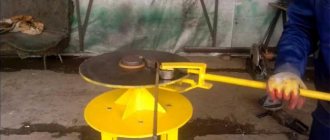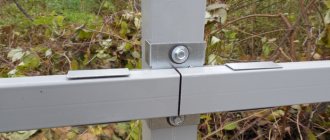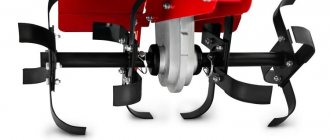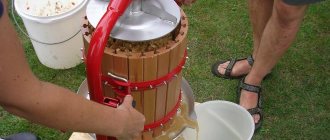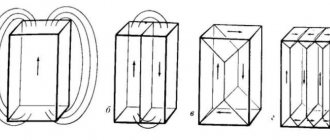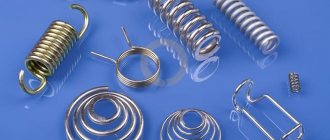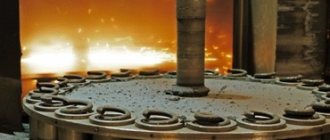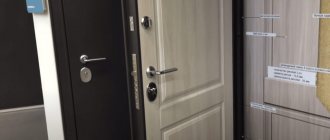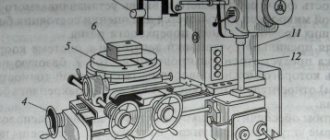Fluxes are used to remove oxides during soldering and reduce the surface tension of the material when heated. Depending on the purpose for which such a product is used, its composition is selected. One of the most commonly used is SKF flux, which contains alcohol and rosin. And if this is exactly what you need, you can not only learn more about this solution, but also prepare it.
Description
It is worth immediately noting here that the solution is completely neutral and does not cause metal corrosion. You don’t have to wash it off after work.
The rosin itself was obtained from cuts of coniferous trees, after which all volatile elements from the composition were evaporated. The remainder occupied approximately 3/4 of the total resin mass. Rosin for soldering was always used only after such a preliminary operation.
You may be interested in: Steam locomotive P36: types, design, technical characteristics and years of use
Everything would be quite good if not for one significant drawback. After placing a hot soldering iron in a resin flux, the working surface of the soldering iron became covered with dirt and it became more difficult to work due to poor visibility.
Properties
Over time, it became clear that using liquid rosin as a flux is much more convenient. Due to the presence of natural acid-type resin substances, rosin acquired the following properties:
- perfectly removes the oxide layer from metal;
- spreads well over the surface;
- perfectly covers the entire soldering area of parts.
Ethyl or wine alcohol was and is still used as a solvent to obtain this composition. This is how alcohol-rosin flux (SCF) is obtained. There are several other organic solvents in which rosin dissolves well - acetone, benzene, gasoline.
However, today ethanol is most actively used for alcohol-rosin flux. In terms of properties, isopropyl alcohol is closest to ethyl alcohol. However, the use of such a reagent is not widespread, since it is much more difficult to obtain and can only be done through chemical manipulation.
Recipe for liquid flux made from rosin and alcohol
To make liquid flux, you will still need the same rosin. It is best to use pine rosin, and not some other rosin. You will need to have a small piece, which we will crush during the process of making flux.
You will also need pure ethyl alcohol or solvent. It is best not to experiment and use solvent 646 to make flux - the best of its kind.
To have somewhere to pour the flux, you need a container. A bottle with a small nail polish brush would be just the ideal option. In this case, using a homemade flux for soldering will be much more convenient and simpler.
Use of SCF
Alcohol-rosin flux has been used for quite a long time and is very active. It does not lose its relevance to this day, as it provides ease of use and acceptable results for soldering elements.
The use of SCF can guarantee a fairly strong connection of a wide variety of materials, but it works best with copper products. Using alcohol-rosin soldering flux, you can work with radio circuits and other boards. Its main advantage in this case is good spreadability. This allows the flux to penetrate into the most difficult to reach places. When working with this type of rosin and elements, low-melting solder is used - the melting point is up to 330 degrees Celsius.
Currently, you can easily purchase any solder for soldering. Alcohol-rosin flux (SCF) is one of these. Production is carried out by both domestic and foreign companies. You can purchase this flux ready-made. If the cooking process was not disrupted and the proportions were observed, then the composition will meet all expectations. However, you can cook it yourself.
How to rinse
First, place the boards to be washed in alcohol in an ultrasonic bath. Quite a lot of circuit boards can be washed in the same solution - its purity does not matter, only the dissolving ability is important. Ultrasonic baths have a pre-set operating period, that is, after turning on, it will work for some time and turn off. If there is no ultrasonic bath, you can close it in an airtight container and shake for some time.
Circuit boards in an ultrasonic bath
After completing the washing cycle, you must quickly (while the boards are still wet) move the boards under running water. Rinse thoroughly under running water using a brush or toothbrush. If this is not done, the remaining dirty alcohol with impurities will dry out and settle on the surface of the board. It is also better to rinse off the tap water, and for this you will need distilled water. If you dry the tap pad, noticeable stains remain on the board. Distilled water does not leave any traces behind. Here are some pictures of the boards after drying:
- When using flammable liquids in an ultrasonic bath under the lid during operation, concentrated flammable vapors are formed!
These vapors can be ignited by static electricity. The best way to protect yourself is not to use flammable liquids. If you do use alcohol for cleaning, then wear a bracelet and follow fire safety rules. - Some components are afraid of ultrasound!
Products with military approval are generally prohibited from being washed with ultrasound. For consumer electronics, ultrasonic cleaning with subsequent performance testing is acceptable. Although if you don’t get carried away with power and time, the risk of damage is quite small. We check all our products before and after washing and have never noticed any problems at this stage.
Very interesting articles about ultrasonic cleaning can be found in the magazine “Surface Mounting”: one and two.
The modern process of assembling printed circuit assemblies (PU) rarely goes without cleaning the presence of solder material residues. Leading enterprises in the radio-electronic industry have long been using PU cleaning technologies that take into account the most stringent requirements for product quality, as well as the cost and safety of the process. However, as statistics show, many enterprises still operate using “traditional” cleaning technology, using isopropyl alcohol (isopropanol) or ethyl alcohol (ethanol) or an alcohol-gasoline mixture. This is despite the fact that more effective, economical and safe materials are available on the market.
This article will discuss the features of using isopropyl, ethyl alcohol, alcohol-gasoline mixtures, their advantages and disadvantages, as well as the features of their use in modern equipment for washing PU, stencils, tools and equipment. Alternative means will also be considered to achieve optimal results while maintaining the latest requirements for efficiency, economy, environmental friendliness and safety of cleaning processes.
Isopropyl and ethyl alcohols, as well as an alcohol-benzone mixture, have been available inexpensive cleaning agents for many years and can show acceptable cleaning results in the production of electronic equipment. These products are used in traditional processes to clean stencils, tools, fixtures and printed circuit components after assembly. Many technologists value these materials for their ease of use and quick drying.
At the same time, the complex composition of modern soldering materials in most cases makes it difficult to remove soldering residues with simple solvents. To ensure stable, high-quality results, cleaning fluids that have been specially developed and tested for use in electronic equipment production processes are increasingly being used. This is becoming increasingly relevant for manufacturers of military and special equipment, medical and aerospace products.
In addition, the conditions for purchasing the use and disposal of isopropanol and ethanol change periodically due to changes in excise taxes and increasingly stringent environmental requirements. Such trends are increasingly forcing electronics manufacturers around the world to introduce modern liquids and new approaches to cleaning.
Disadvantages of isopropyl, ethyl alcohol and alcohol-gasoline mixtures
Despite the fact that these materials have long been used for cleaning PU and stencils, they have a set of disadvantages that limit their use: a low flash point of 8 ohms (Fig. 3) and can cause electrochemical migration and/or corrosion, which leads to reduced reliability . Using lead-free soldering reduces the likelihood of complete residue removal because lead-free solder pastes contain more activators and resin. These issues were discussed in detail in our previous articles (“Surface mounting” No. 4(96) article “Modern approach to finding new solutions in cleaning high-density printed circuit assemblies”, “Surface mounting” No. 6(92) article “The actual cost of the process washing") and seminars, so we will only emphasize once again that poorly washed flux residues can lead to serious failures and malfunctions in the operation of electronic equipment. As the well-known axiom says, if it is impossible to organize high-quality cleaning, then it is better not to carry it out at all, especially with the use of modern soldering materials (Article “Cleaning printed circuit assemblies”, Alexey Efremov, Components and Technologies, No. 6'2004).
Rice. 3. Comparison of surface insulation resistance (SIR) after IPA and
special means for removing flux residues
The consumption of flushing liquid primarily depends on the intensity of evaporation, lifetime, process performance and the specific application in a particular case.
Compared to modern cleaning agents, the high evaporation rate of isopropyl, ethyl alcohol and alcohol-gasoline mixtures is a significant cause of high losses when using them. Isopropanol is a very simple solvent, not originally intended for flux removal; the solubility of flux in it is extremely limited. Due to their poor performance, they have a limited lifespan, which increases overall costs. Recent tests have shown that consumption can be reduced when using water-based products or modern solvents based on modified alcohol compounds.
How to make your own flux
Soldering alcohol-rosin flux can be made with your own hands. In fact, the process of preparing it only takes a few minutes.
First you need to take the resin and grind it thoroughly. The better this stage is carried out, the faster the dissolution of all substances in the solvent will occur. The result of such quick and modest manipulations is how you can obtain an alcohol-rosin substance for soldering.
You can do this in another way. A piece of resin is wrapped in cloth. You can also use cellophane for these purposes, but experienced home craftsmen warn that during the following manipulations it will tear very quickly. The rosin, wrapped in this way, is placed on the table and, using a hammer, is broken into a powdery state. The most experienced soldering workers have adapted to using a conventional manual meat grinder for these purposes.
Other DIYers use a rolling pin or a thick bottle to roll out a piece of rosin instead of a hammer.
All these methods share the same goal - it is necessary to grind the raw material to a powder state.
Dilution in solution
After this, the resulting mass of powder should be poured into a bottle, vial, vial or other small similar container. Many people use nail polish containers. Here it is very important to get the hang of pouring out the dust in such a way that it does not crumble; you need to pour the powder carefully and carefully. After this, you can add medical alcohol to the same bottle.
As for the proportion, the recommended ratio is 2:3 (liquid to powder).
If you need to obtain a flux with a higher viscosity, you can increase the amount of resin and leave the same amount of alcohol. It is worth noting that every home master is quite capable, after a couple of times, of independently selecting the ratios that are most suitable for his work, for those parts with which he interacts.
Why do you need to wash the boards?
Washing the board is done to remove flux residues, which can lead to oxidation and current leakage. Many people believe that boards do not need to be washed, especially if they use inactive flux. We solved this dilemma for ourselves simply - always wash the boards. I don’t want to trust flux manufacturers. For example, LTI-120, according to many sites, is not active and does not need to be washed, but we have more than once encountered the fact that a dirty FT232RL refused to work until washed. Also, washing the boards is mandatory before applying varnish, and it’s simply much more pleasant to work with them if they don’t smudge.
Is it possible to replace alcohol?
Some of the experienced craftsmen say that you can save alcohol, if necessary, and replace it with cheap cologne. In fact, this recommendation is very controversial. The smell will, of course, be more pleasant, but excess additives can spoil or worsen the quality of soldering.
Others talk about using vodka. This is also quite controversial, since rosin is an organic compound and therefore does not dissolve well in water. Vodka is a mixture of alcohol and water. It will be quite difficult to dissolve the resin even in high-quality vodka.
Source
What to wash with
Depending on the capabilities, you can wash the boards with solvent, acetone, gasoline or alcohol. However, component manufacturers focus on the components and focus on the alcohol-gasoline mixture. The use of other solvents may erase component markings and even damage them. For example, piezo emitter housings are dissolved with acetone. We use alcohol to clean printed circuit boards. If you really want, you can buy it from individuals through social networks at a price of about $30 for 5 liters.
It is also advisable to use distilled water for rinsing, which can be purchased at a pharmacy or auto store. In a pharmacy it costs about 60 rubles, in a car dealership it is two times cheaper.
From the technological equipment, it is desirable to have an ultrasonic bath, which provides mechanical action and heating to accelerate dissolution. We purchased this ultrasonic bathtub QICK 218-35:


